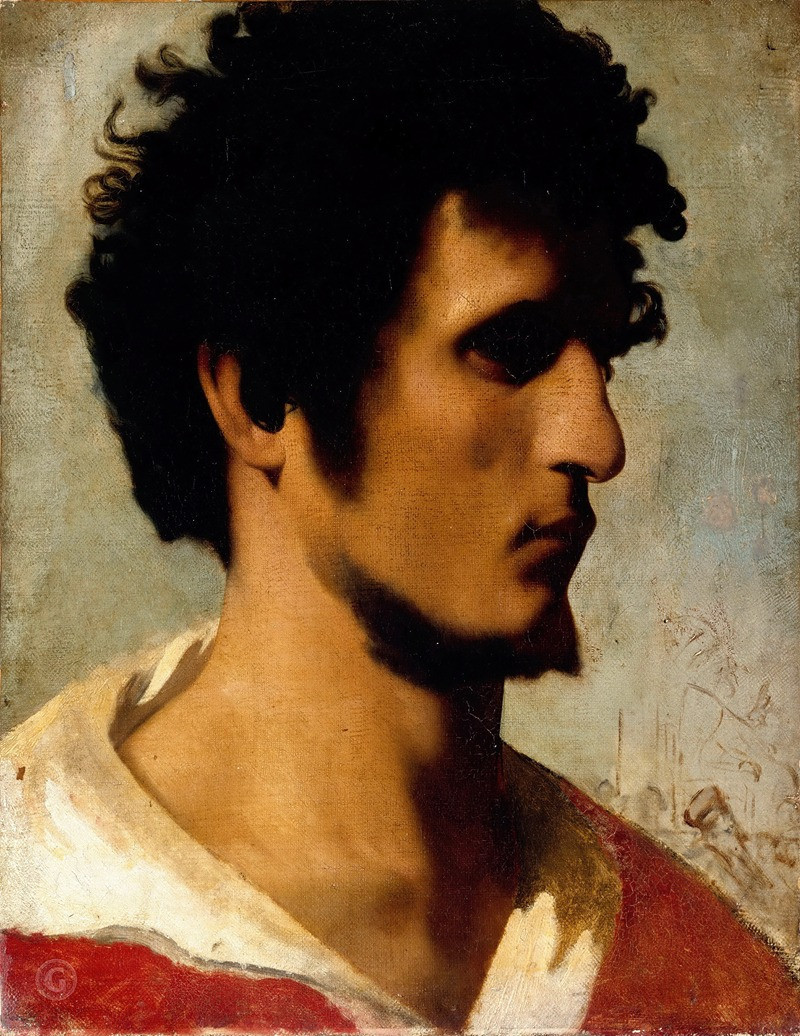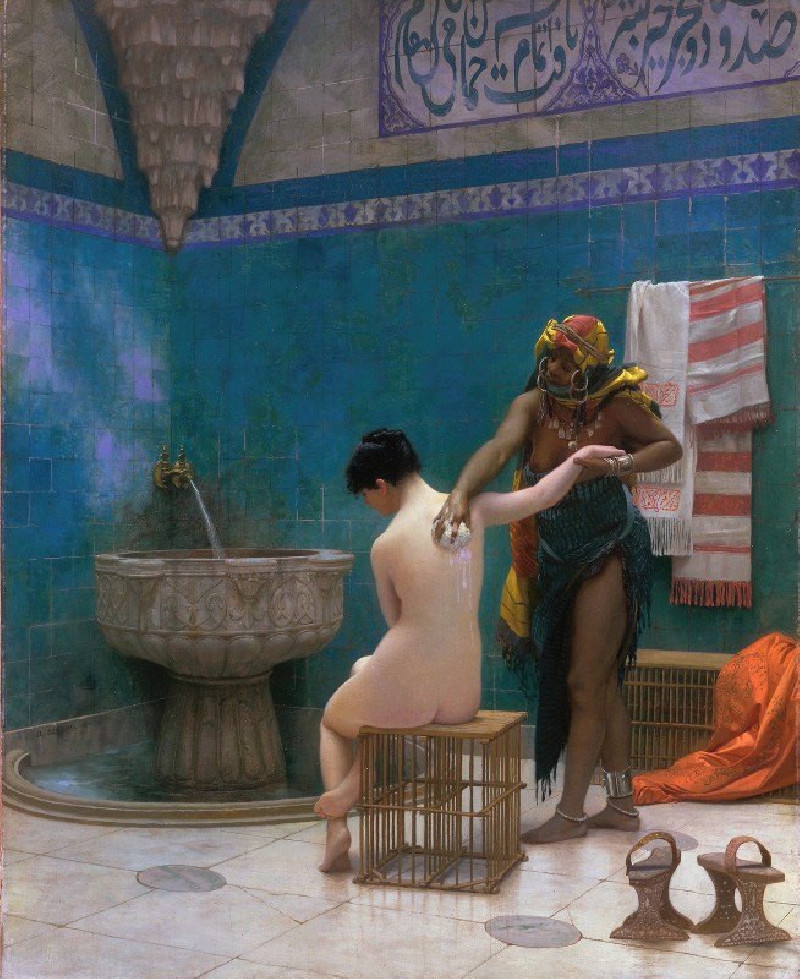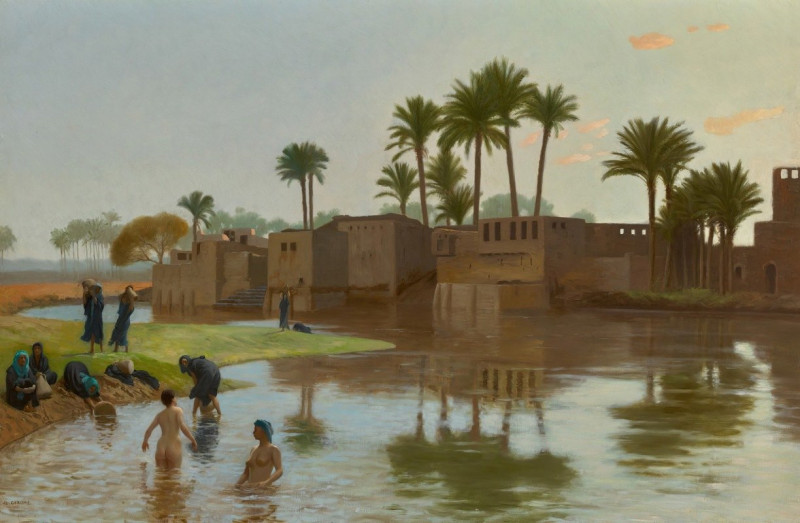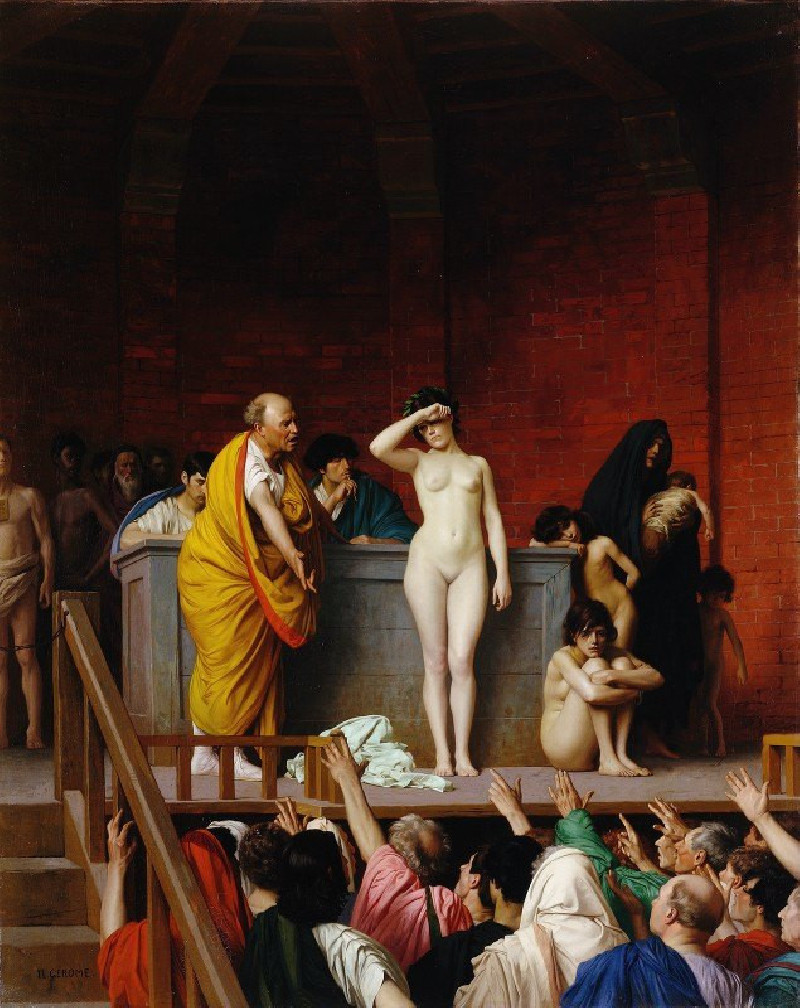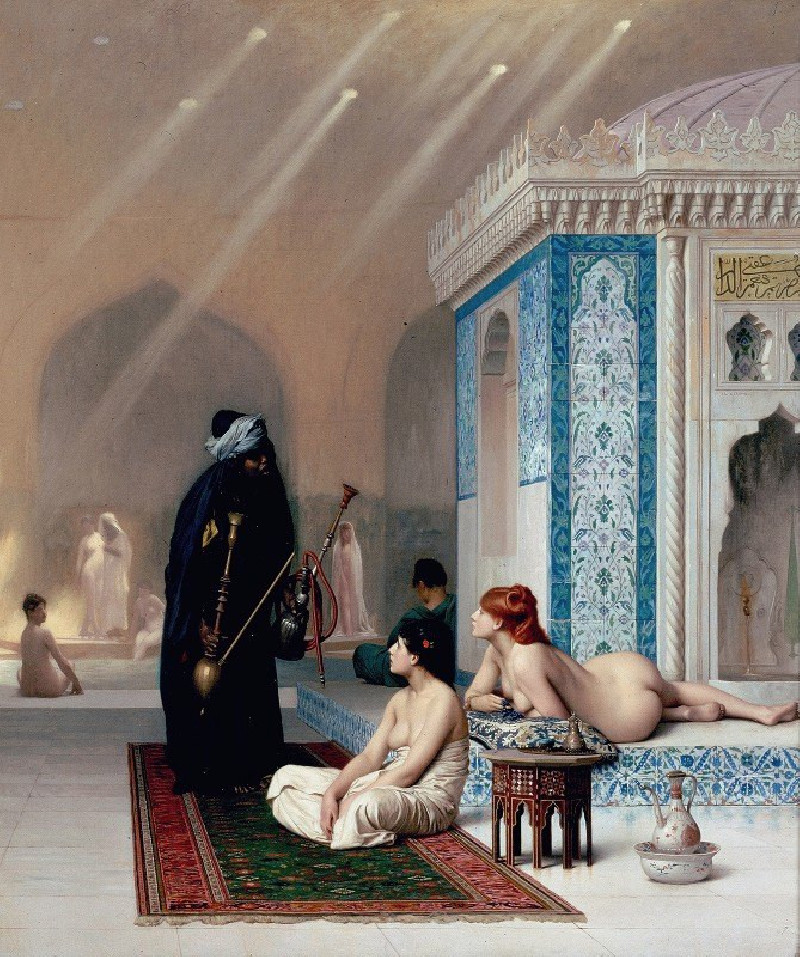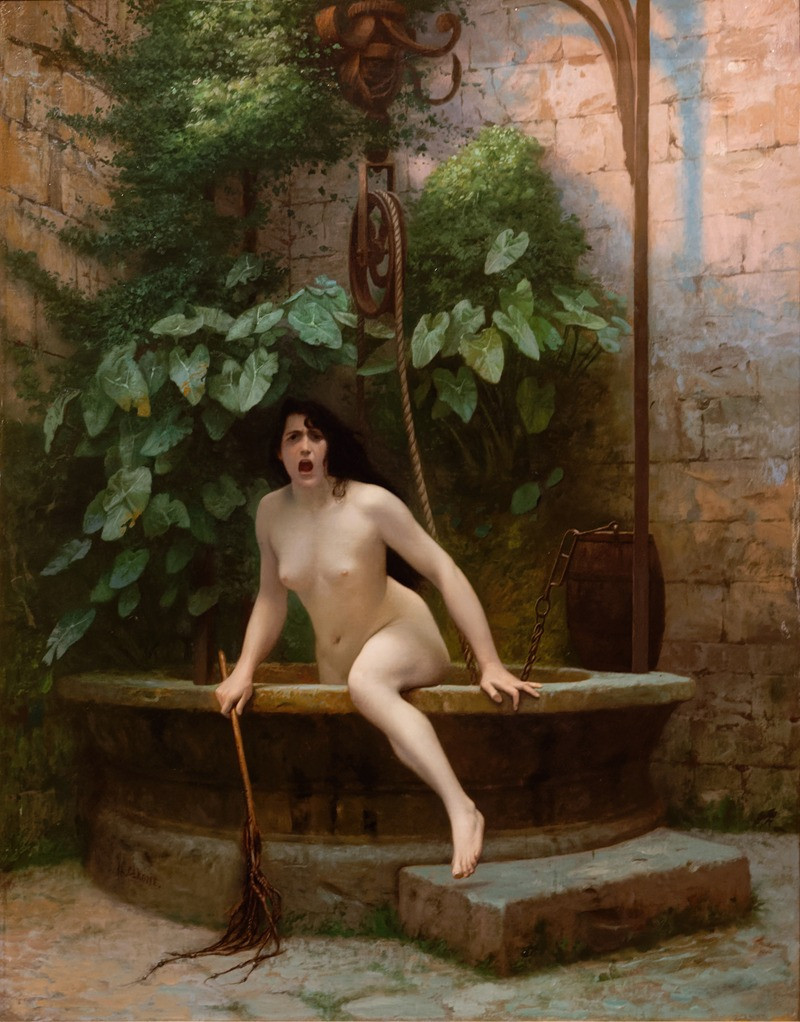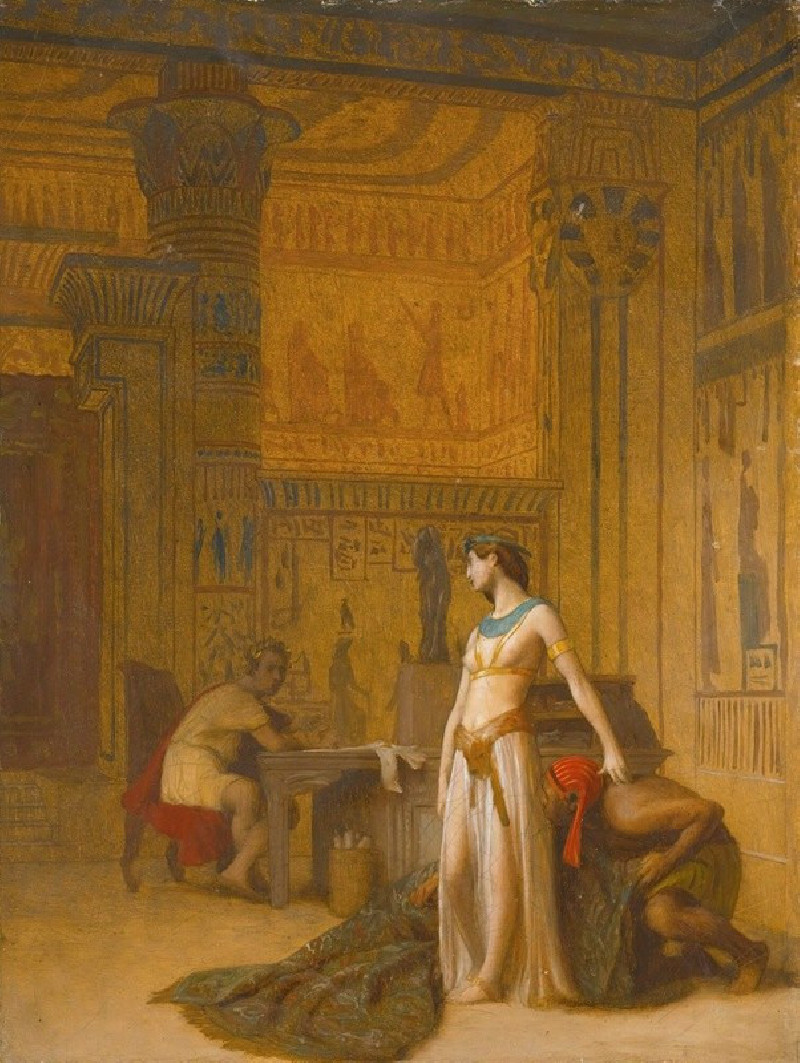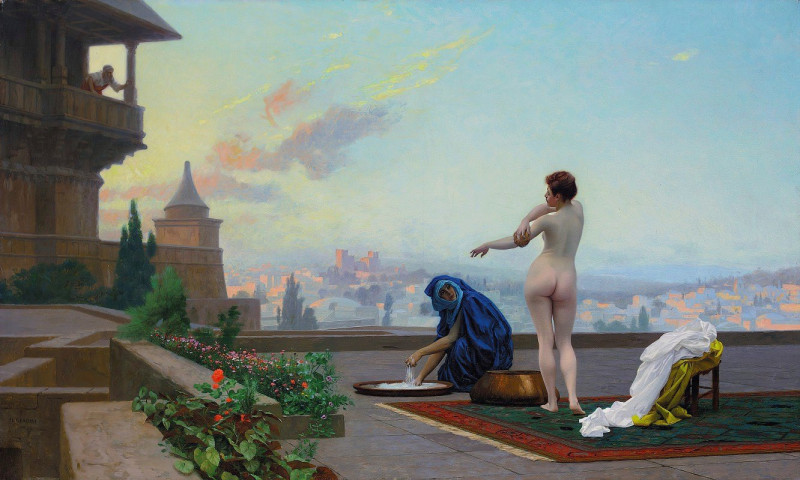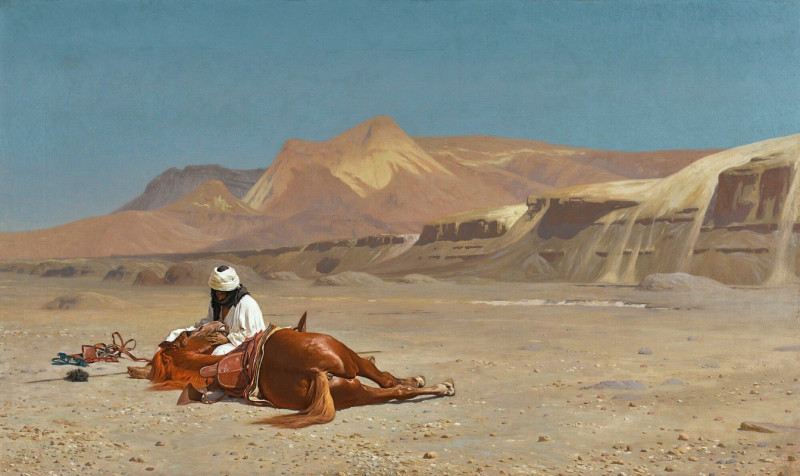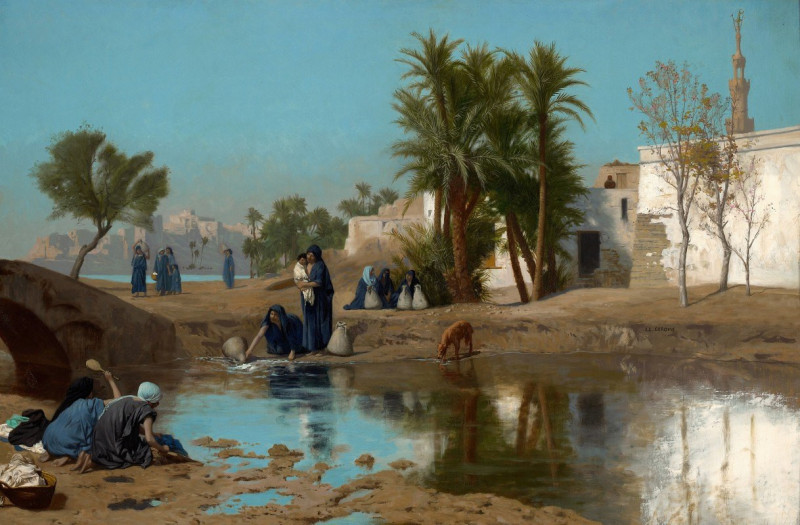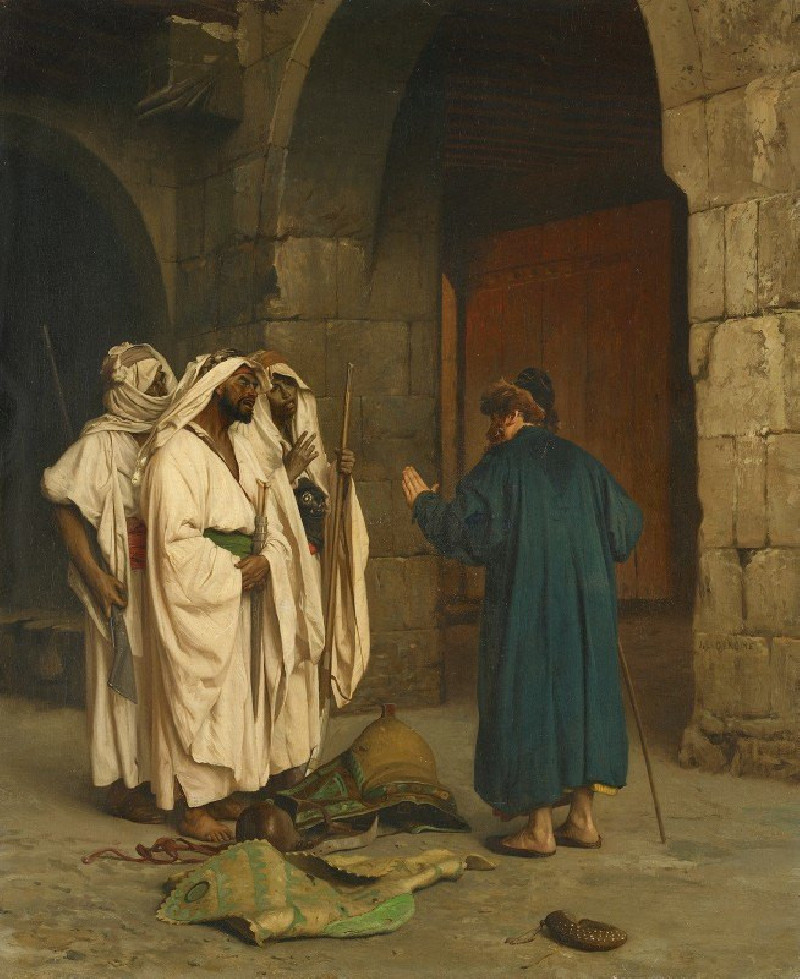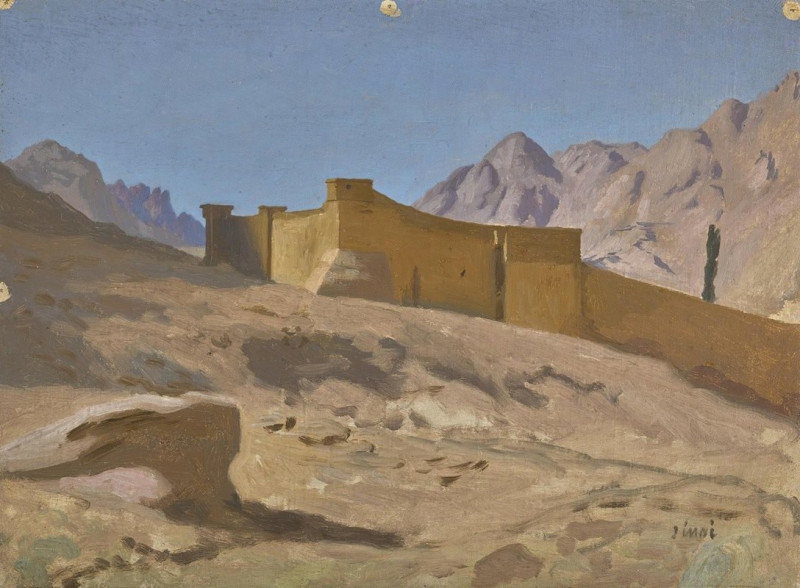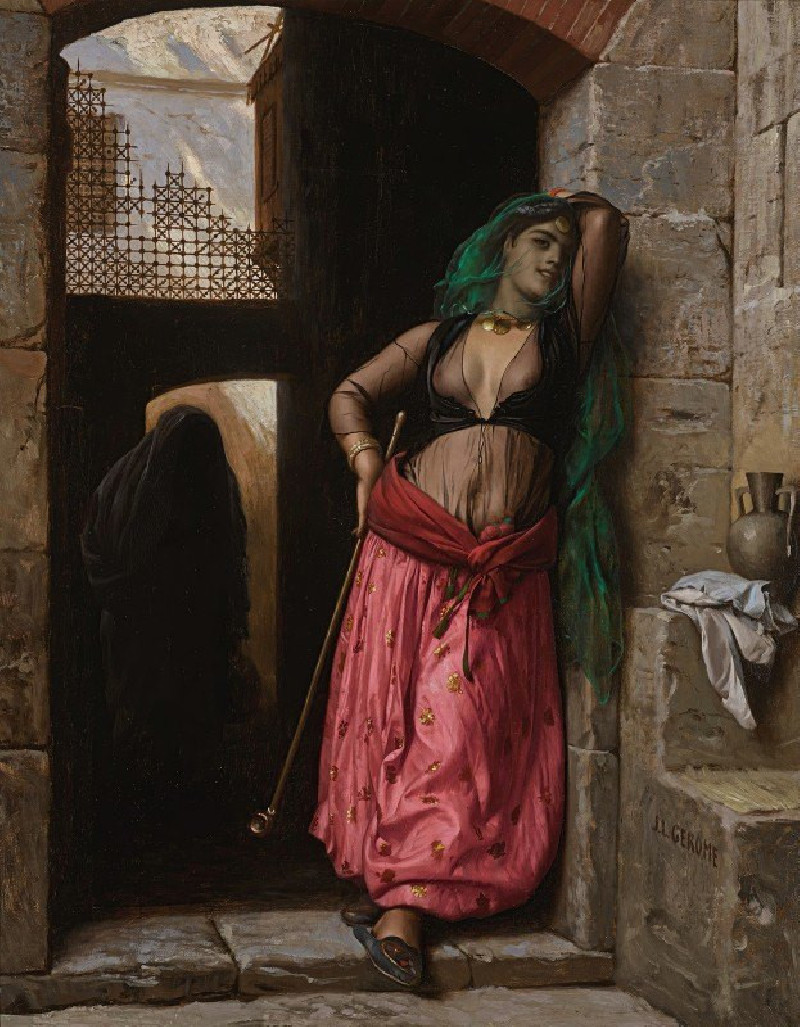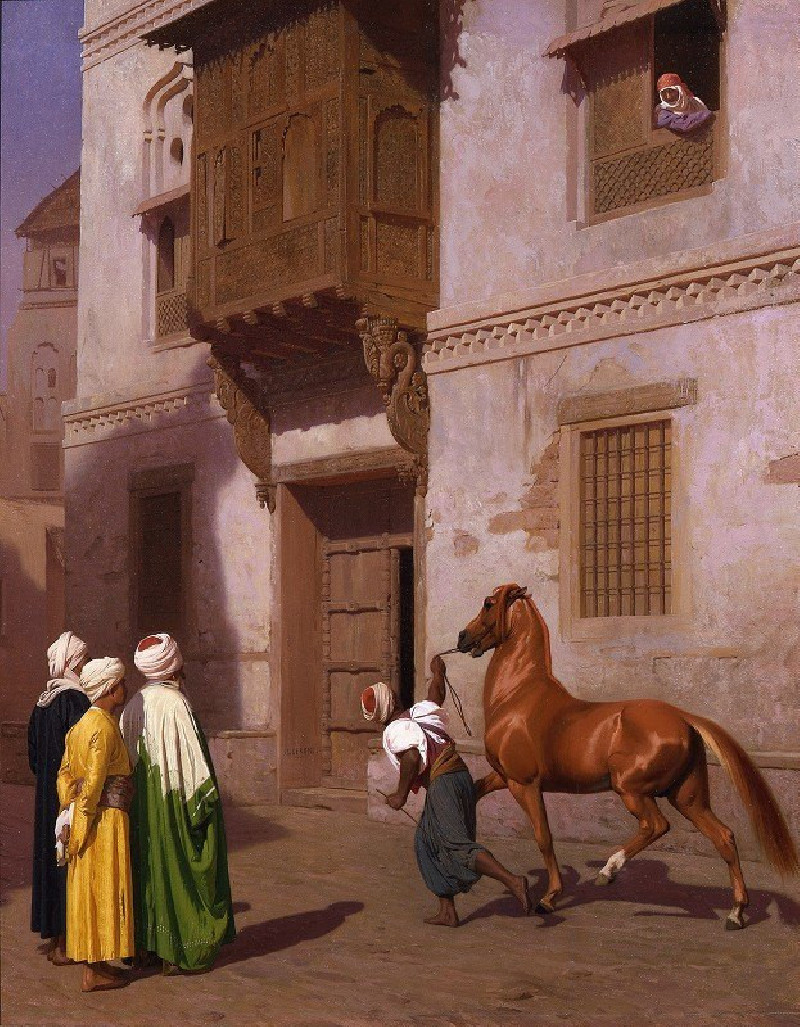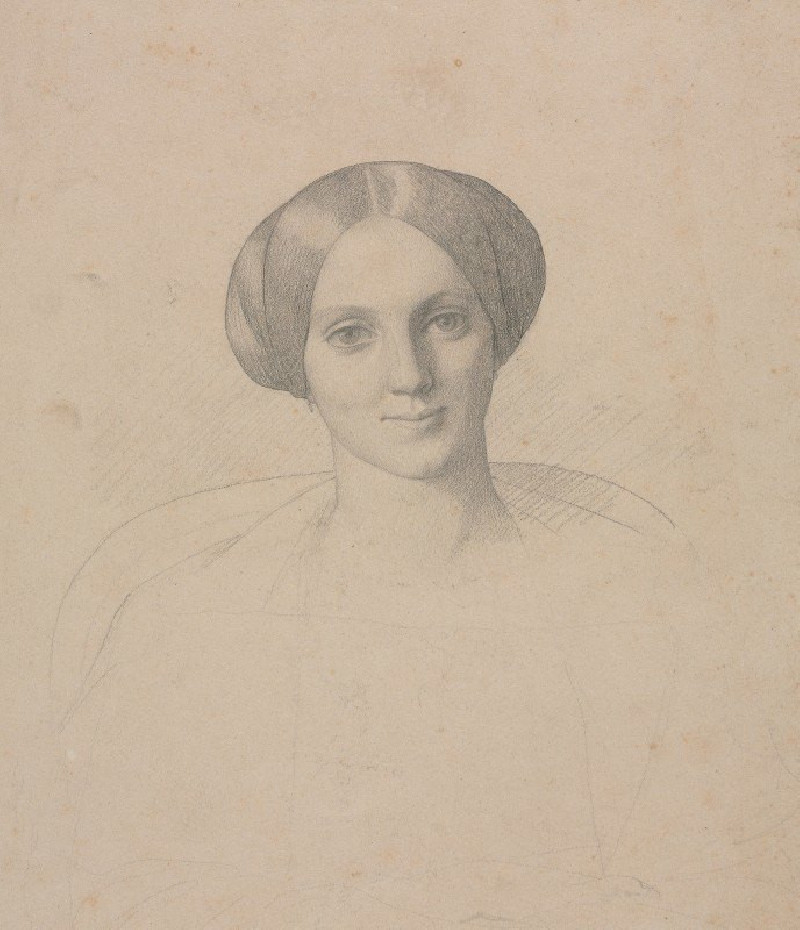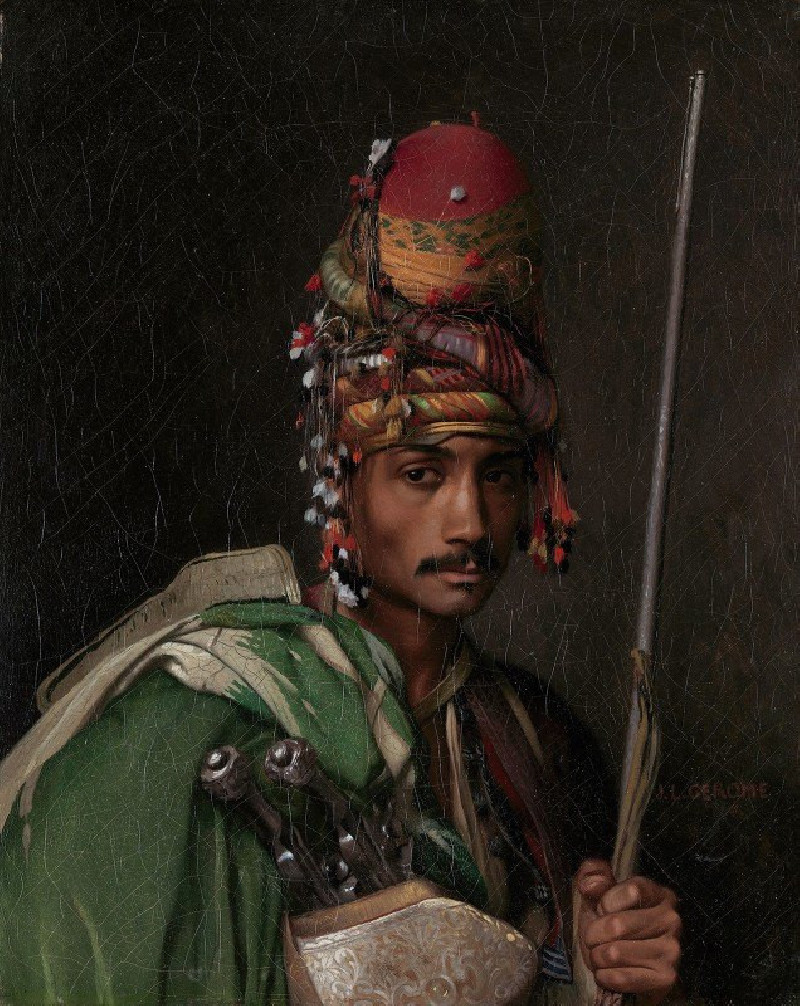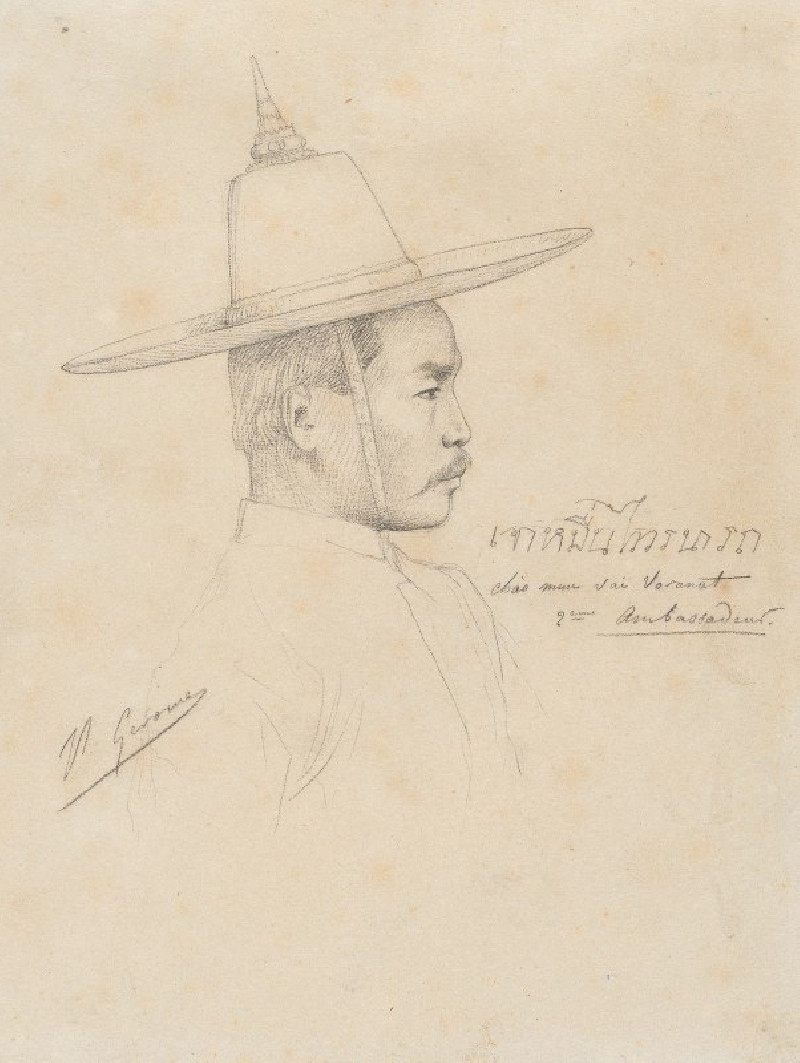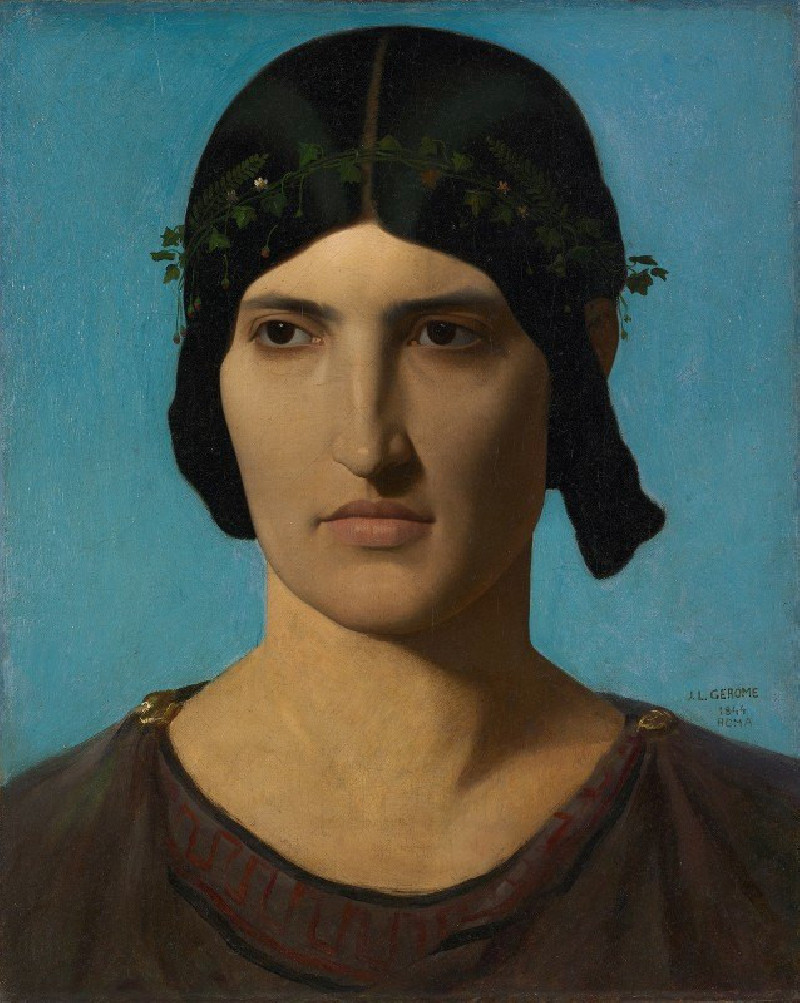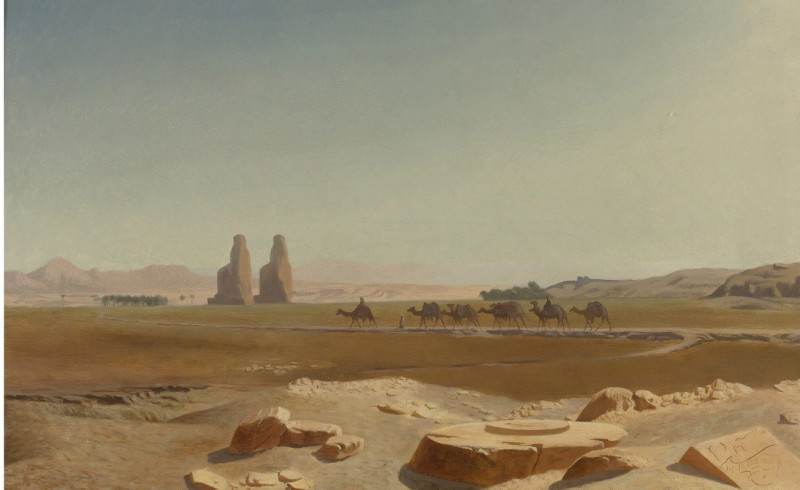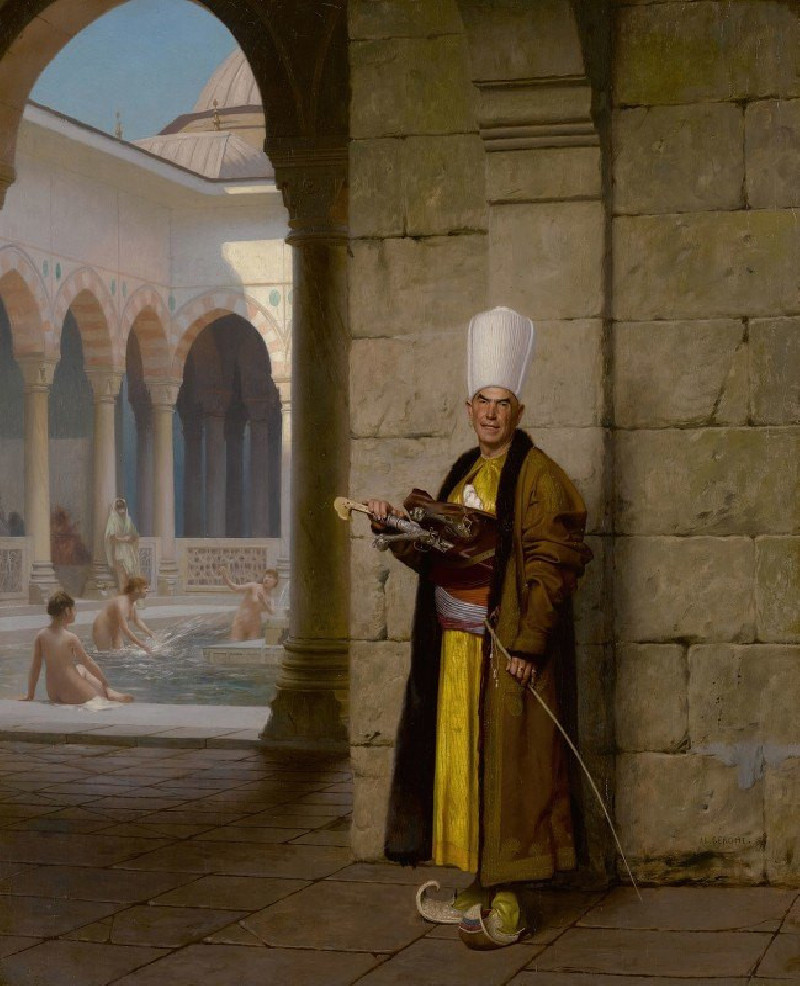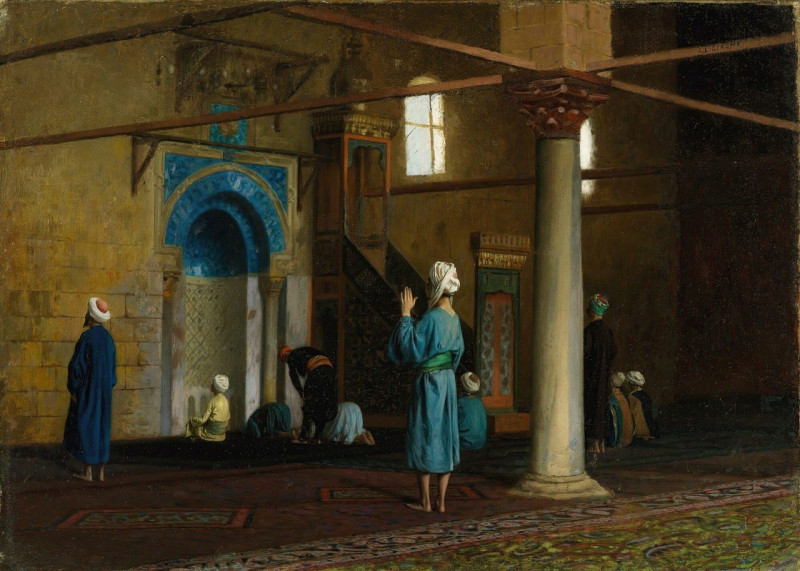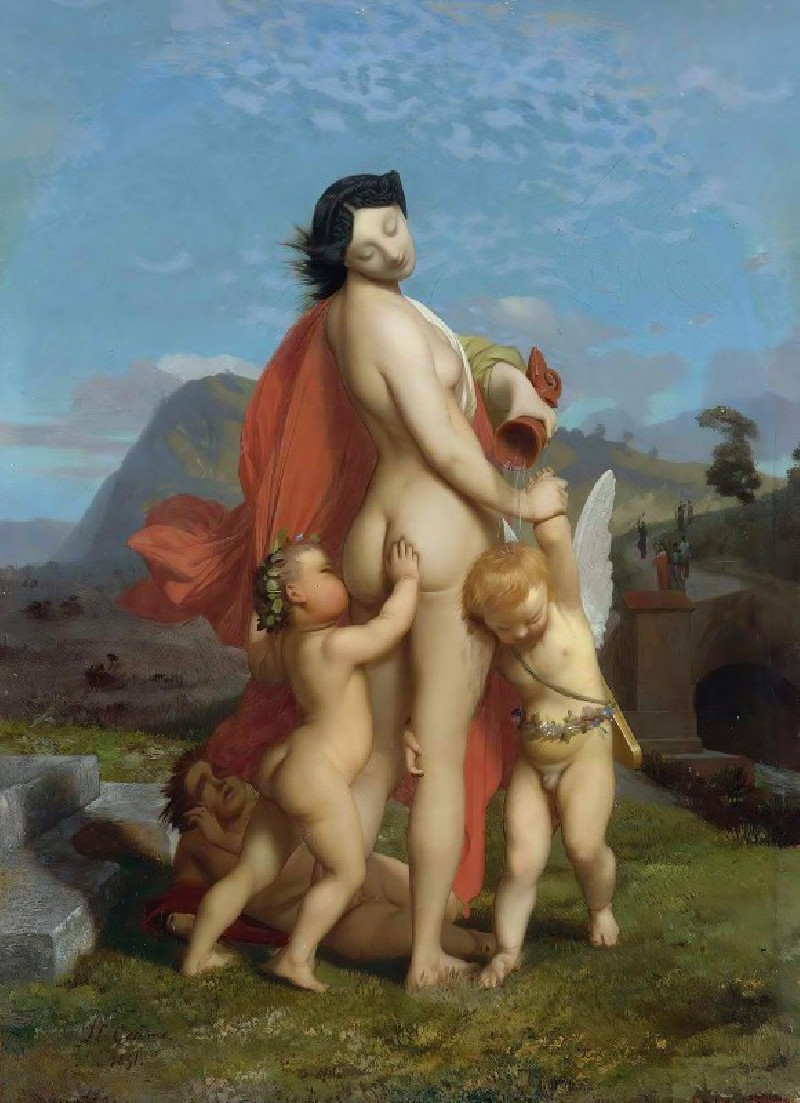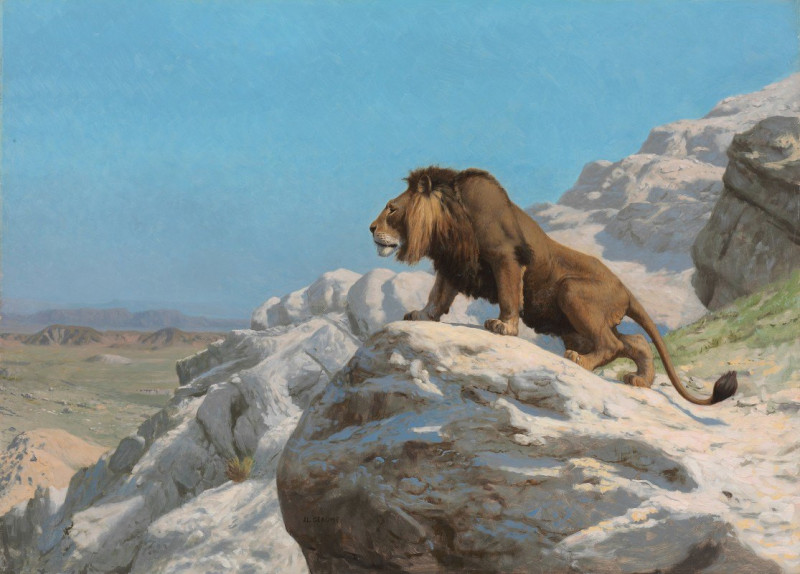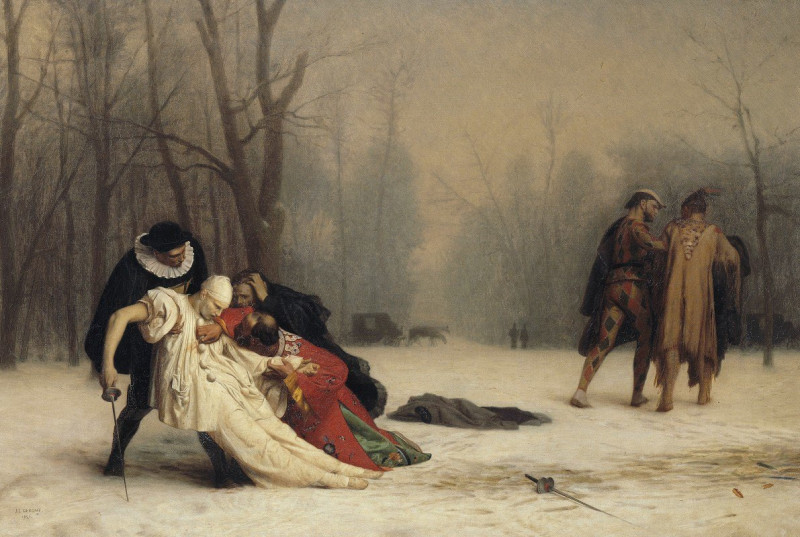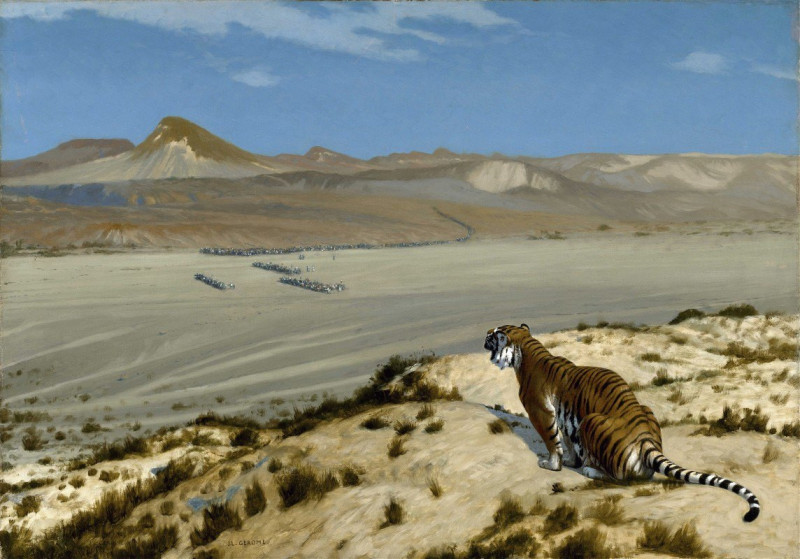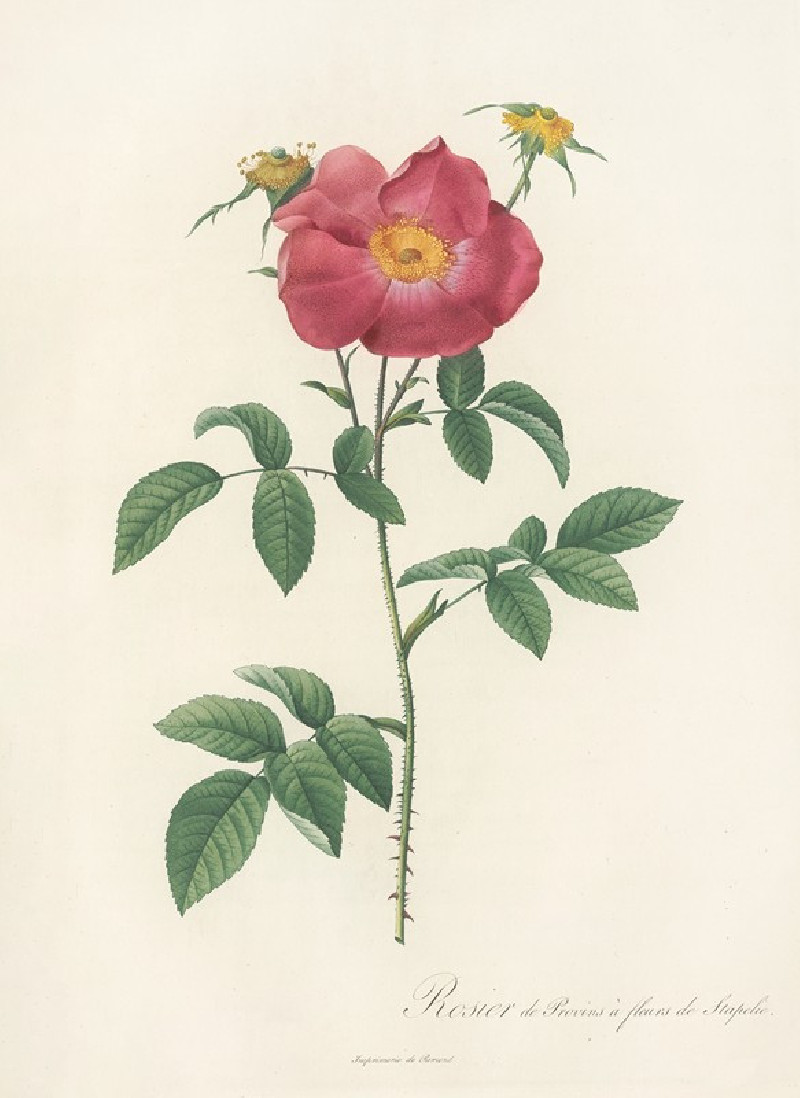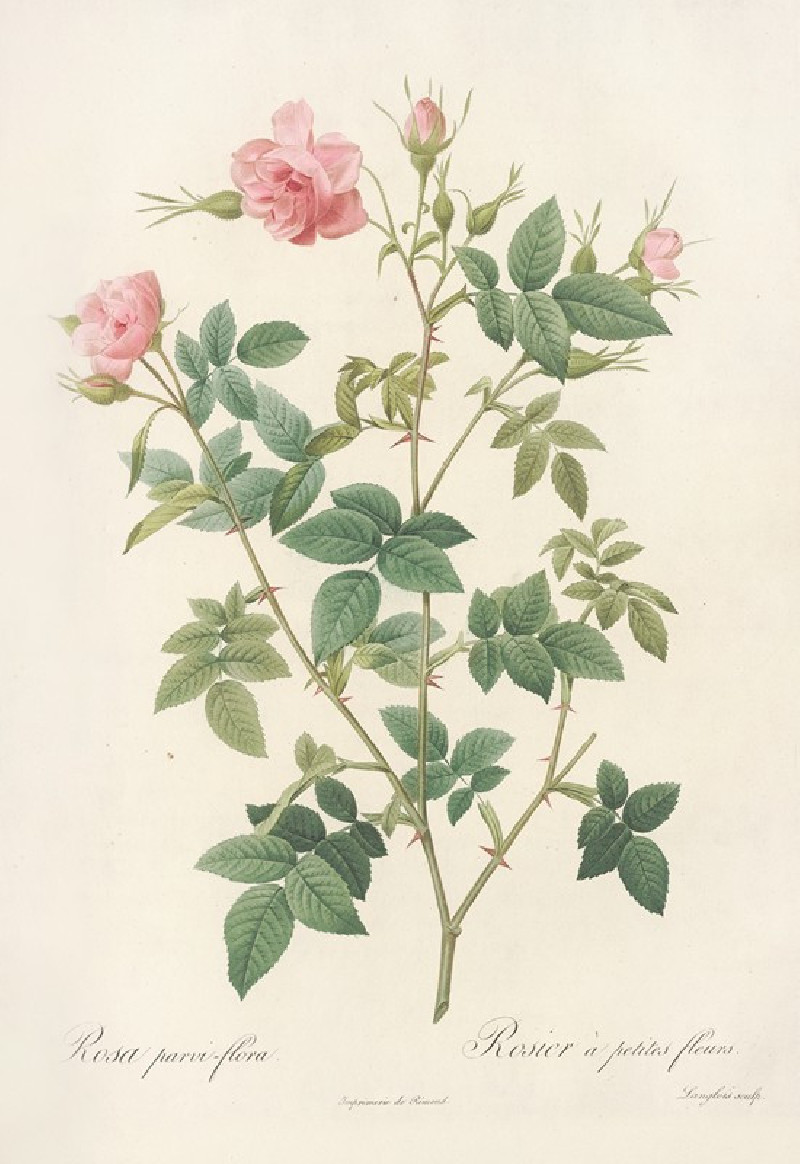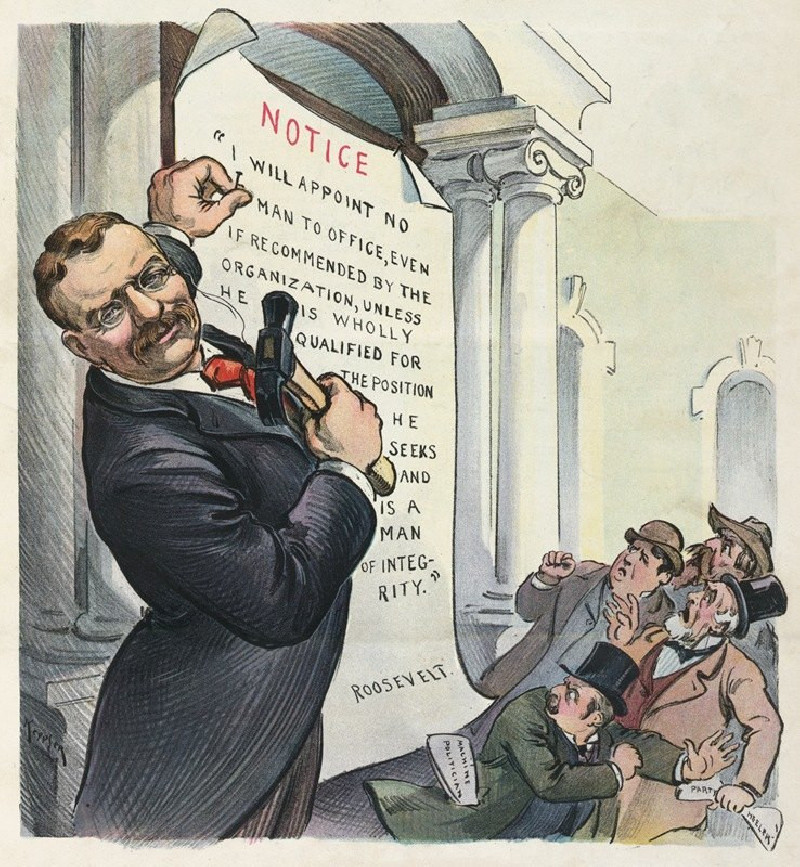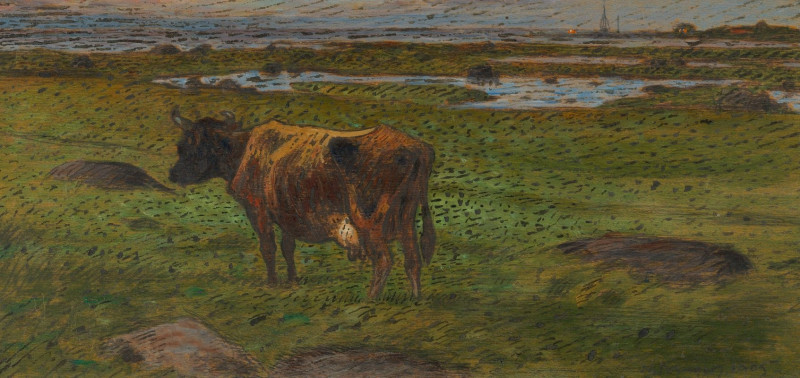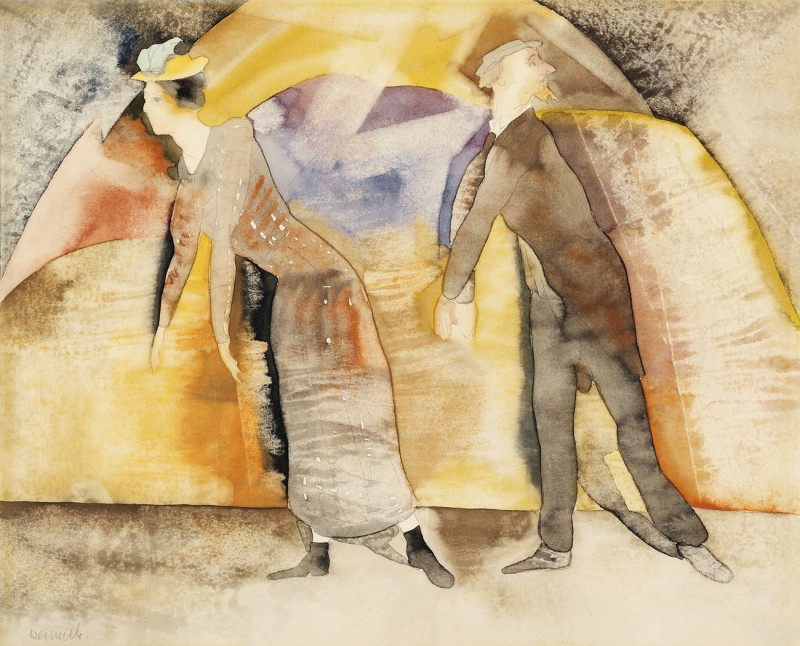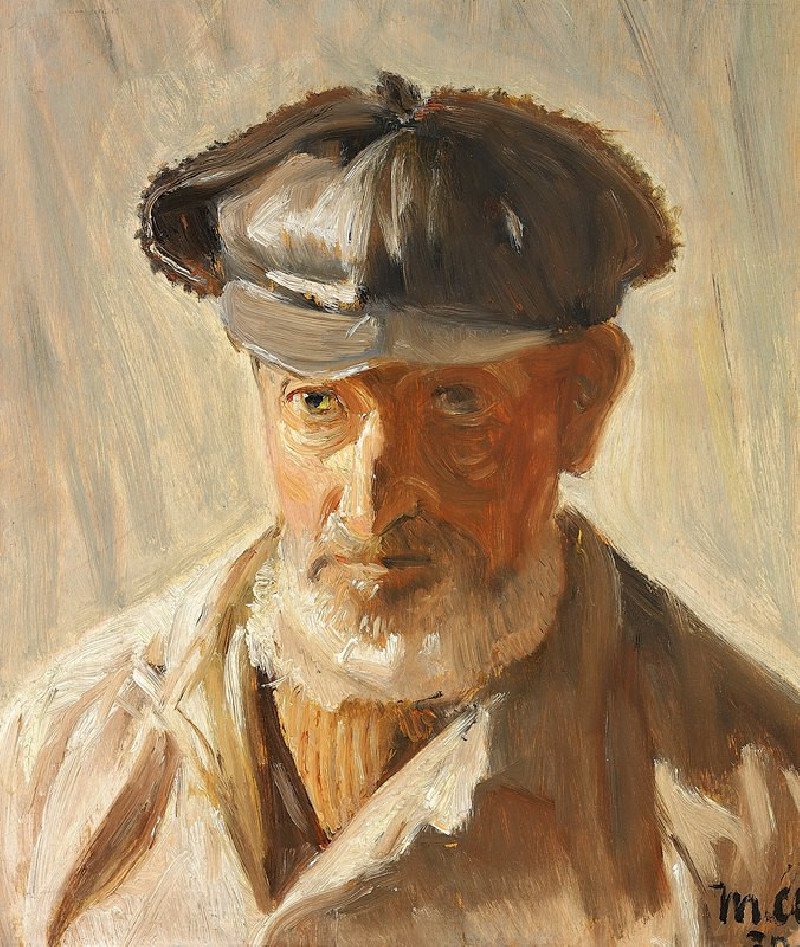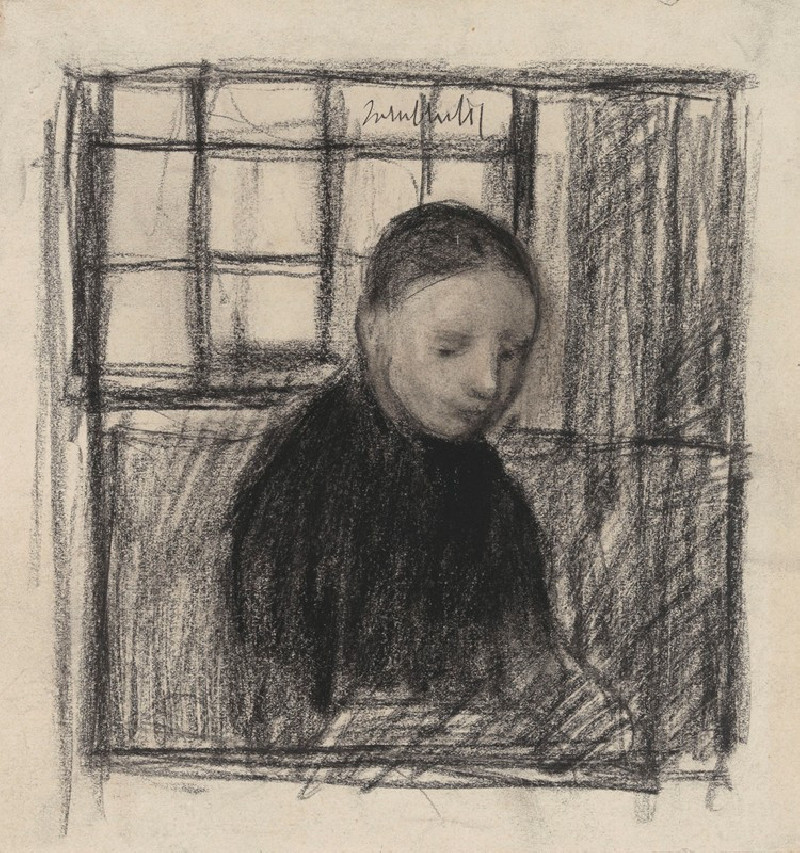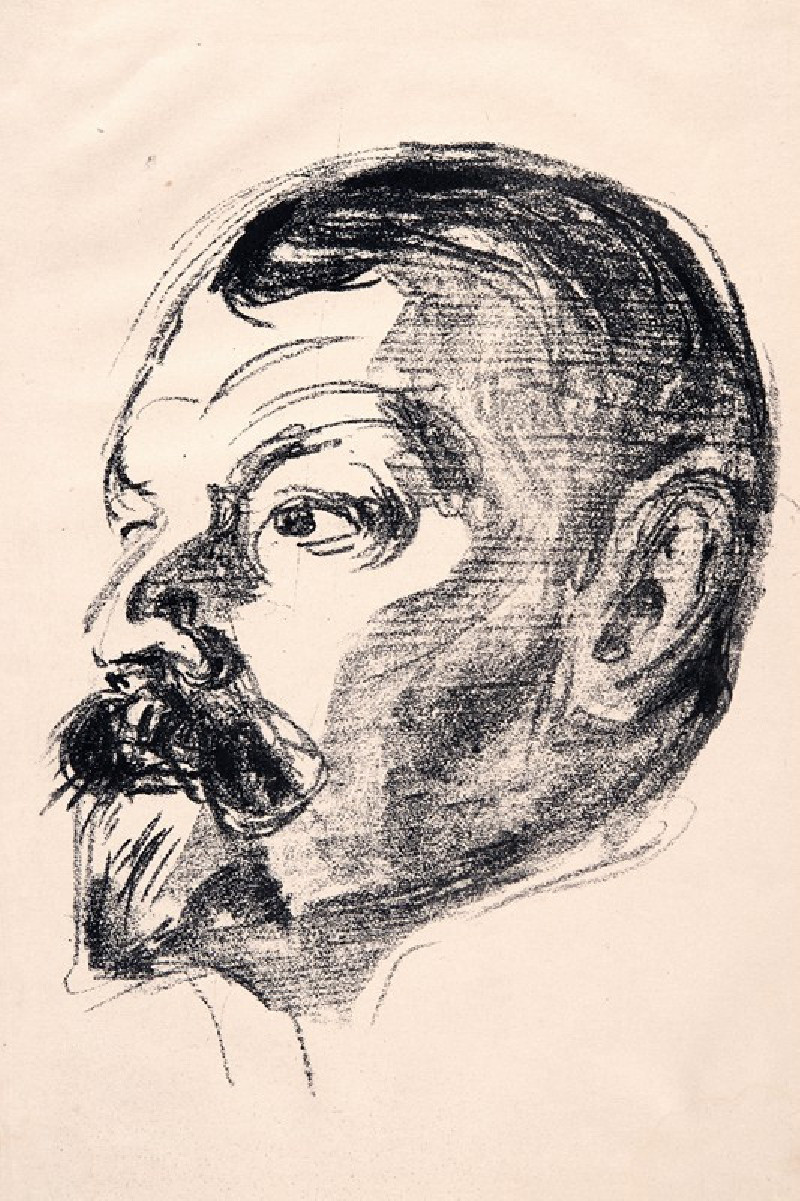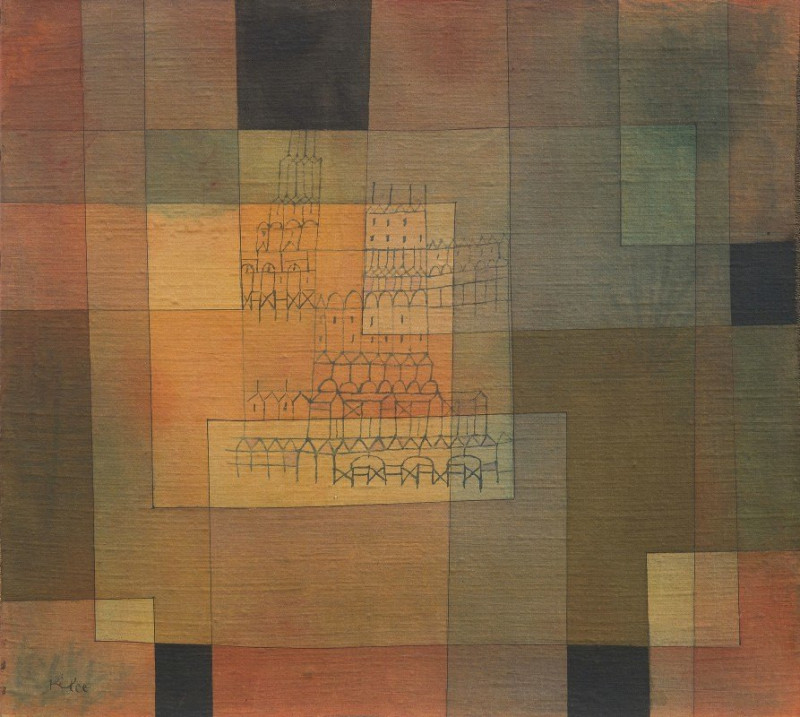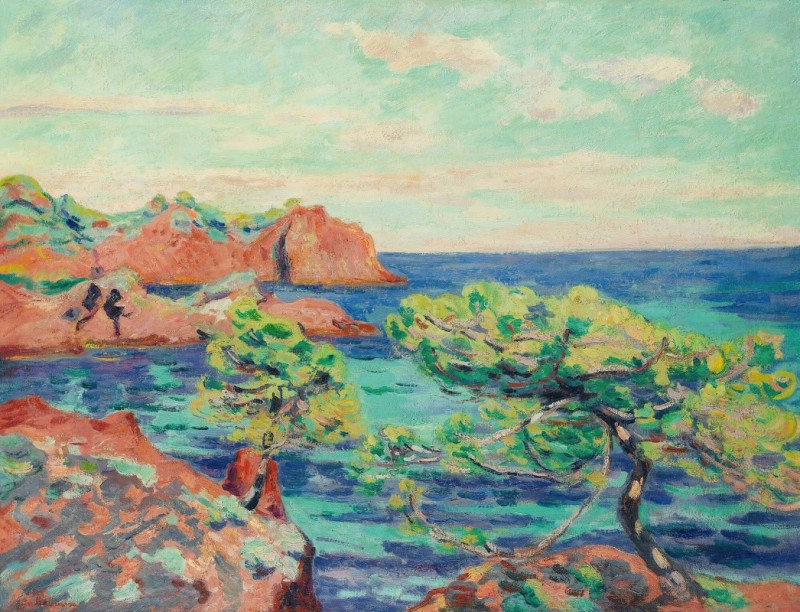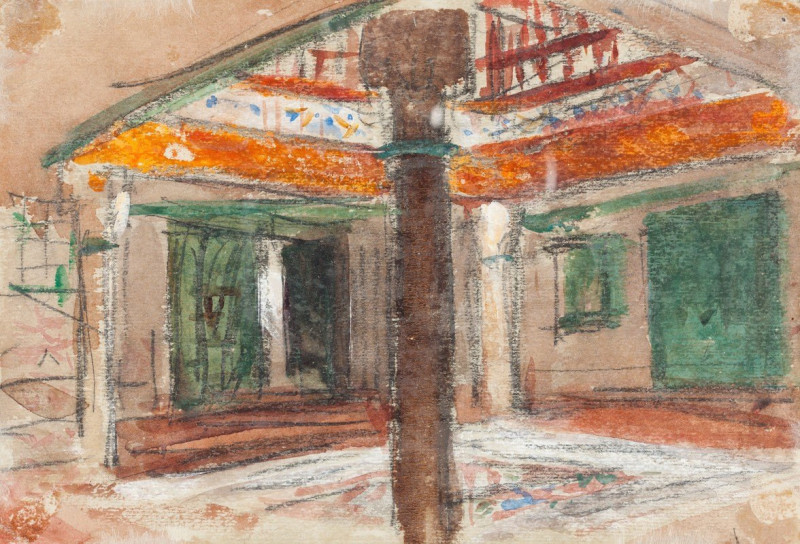Head of a Peasant from the Roman Countryside (1844)
Technique: Giclée quality print
Recommended by our customers
More about this artwork
Dive into the rich heritage of 19th-century French art with Jean-Léon Gérôme's captivating painting, "Head of a Peasant from the Roman Countryside." This remarkable artwork, created in 1844, offers an intimate portrayal of rural life through the visage of a young peasant man.In this striking piece, Gérôme masterfully utilizes light and shadow to sculpt the peasant's features, imbuing them with profound expression and realism. The subject's profile, shown in sharp relief against a muted background, captures the intricate play of light accentuating his curly hair and the angularity of his jaw. The youthful yet intense gaze directed slightly off-canvas evokes a narrative that extends beyond the picture frame, inviting viewers to ponder the subject’s thoughts and life.Significantly, the use of color and texture in the painting adds layers of depth and emotion. The reddish hues of the man's attire contrast with the soft, earthy tones of his skin, highlighting his robust physical presence and perhaps the laborious environment in which he lives. Gérôme's brushwork is particularly notable in the realistic depiction of skin texture and the fabric's folds, conveying a tactile sense of the materials.This painting is not just an artistic expression but a valuable historical artifact that offers insights into the cultural and social contexts of its time. Gérôme, renowned for his detailed academic style and historical scenes, here focuses on the personal and mundane, thus celebrating the dignity of ordinary life in the Roman countryside.
Delivery
Returns
Jean-Léon Gérôme was a French painter and sculptor in the style now known as academicism. His paintings were so widely reproduced that he was "arguably the world's most famous living artist by 1880." The range of his oeuvre included historical painting, Greek mythology, Orientalism, portraits, and other subjects, bringing the academic painting tradition to an artistic climax. He is considered one of the most important painters from this academic period. He was also a teacher with a long list of students.

